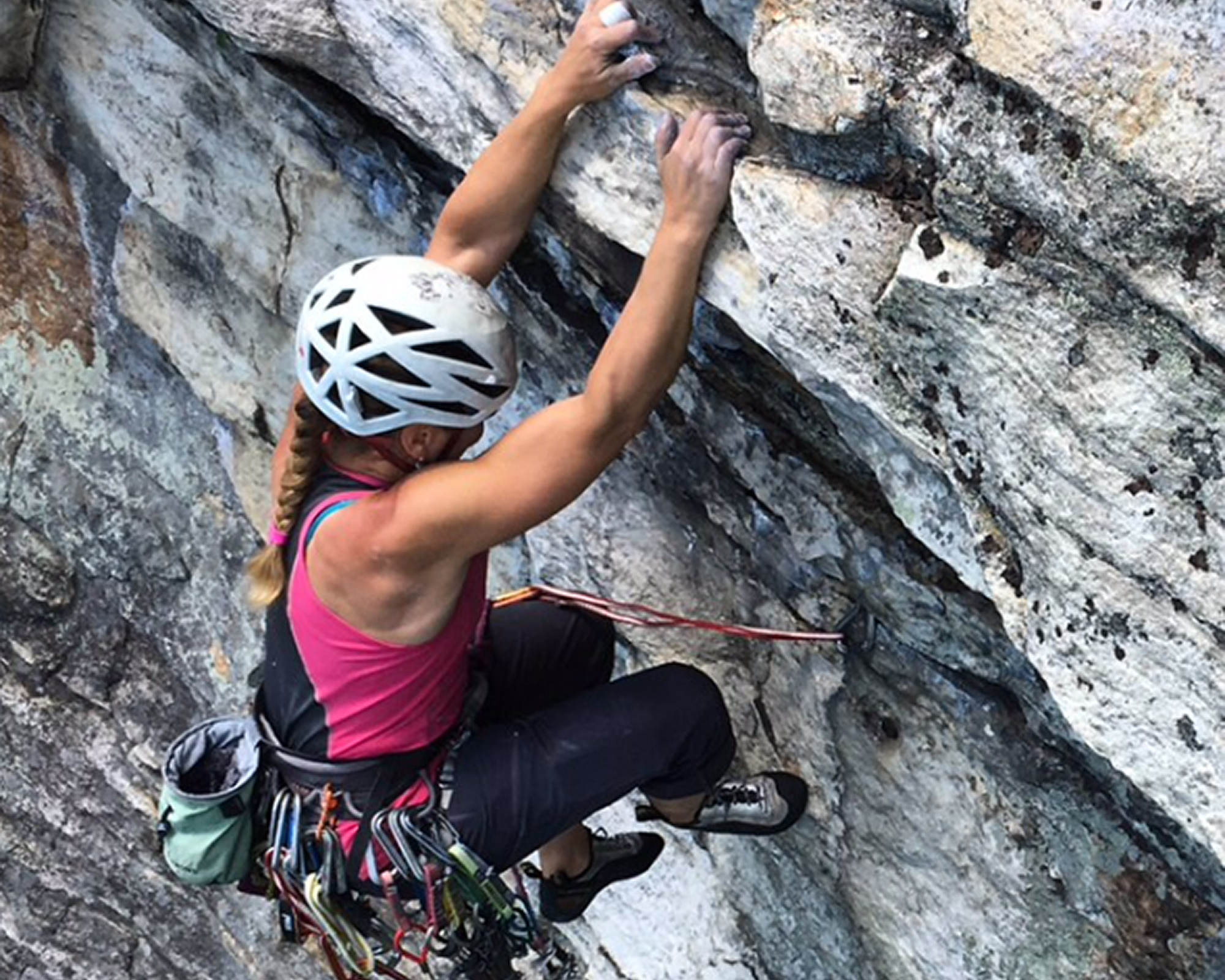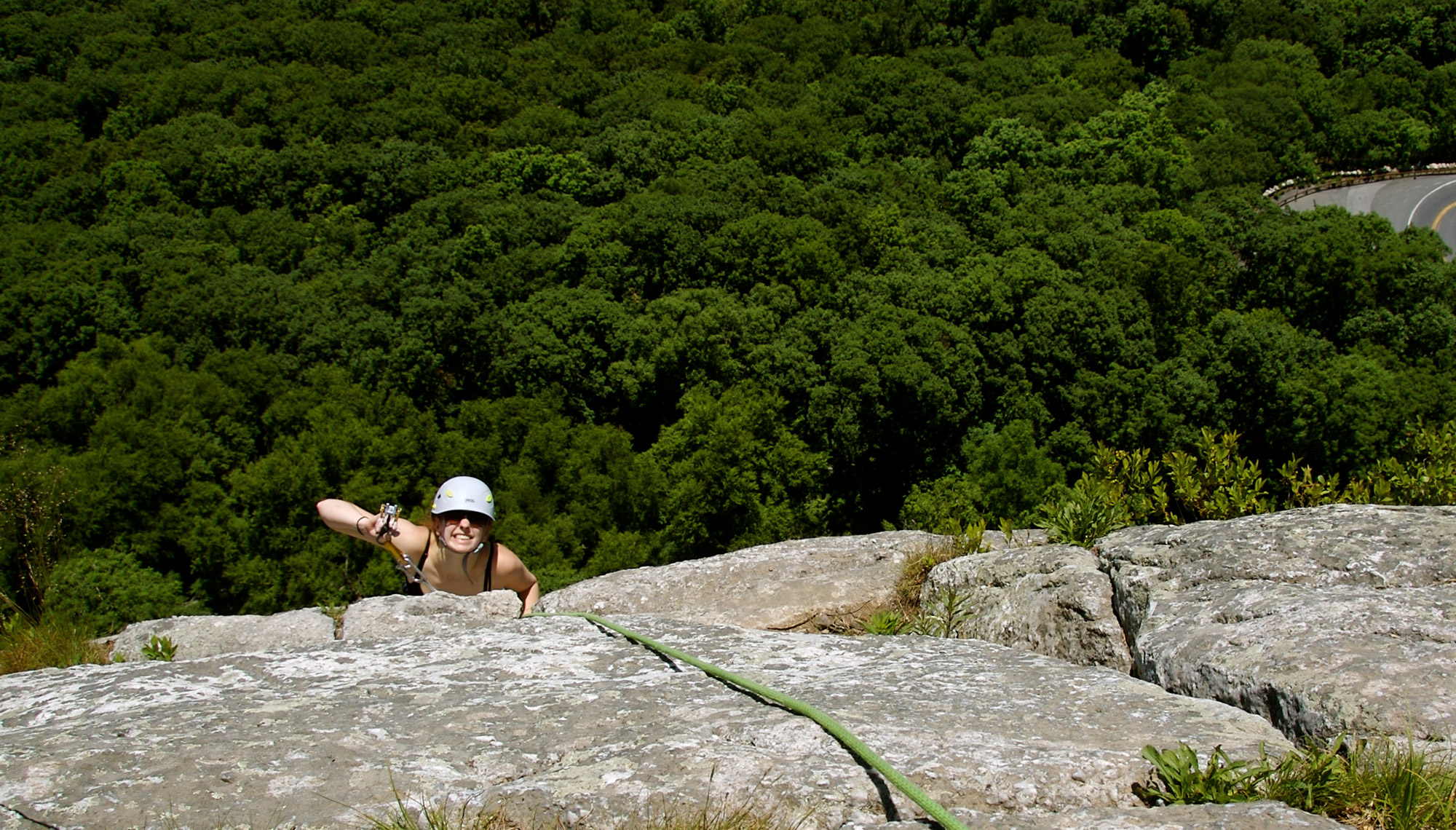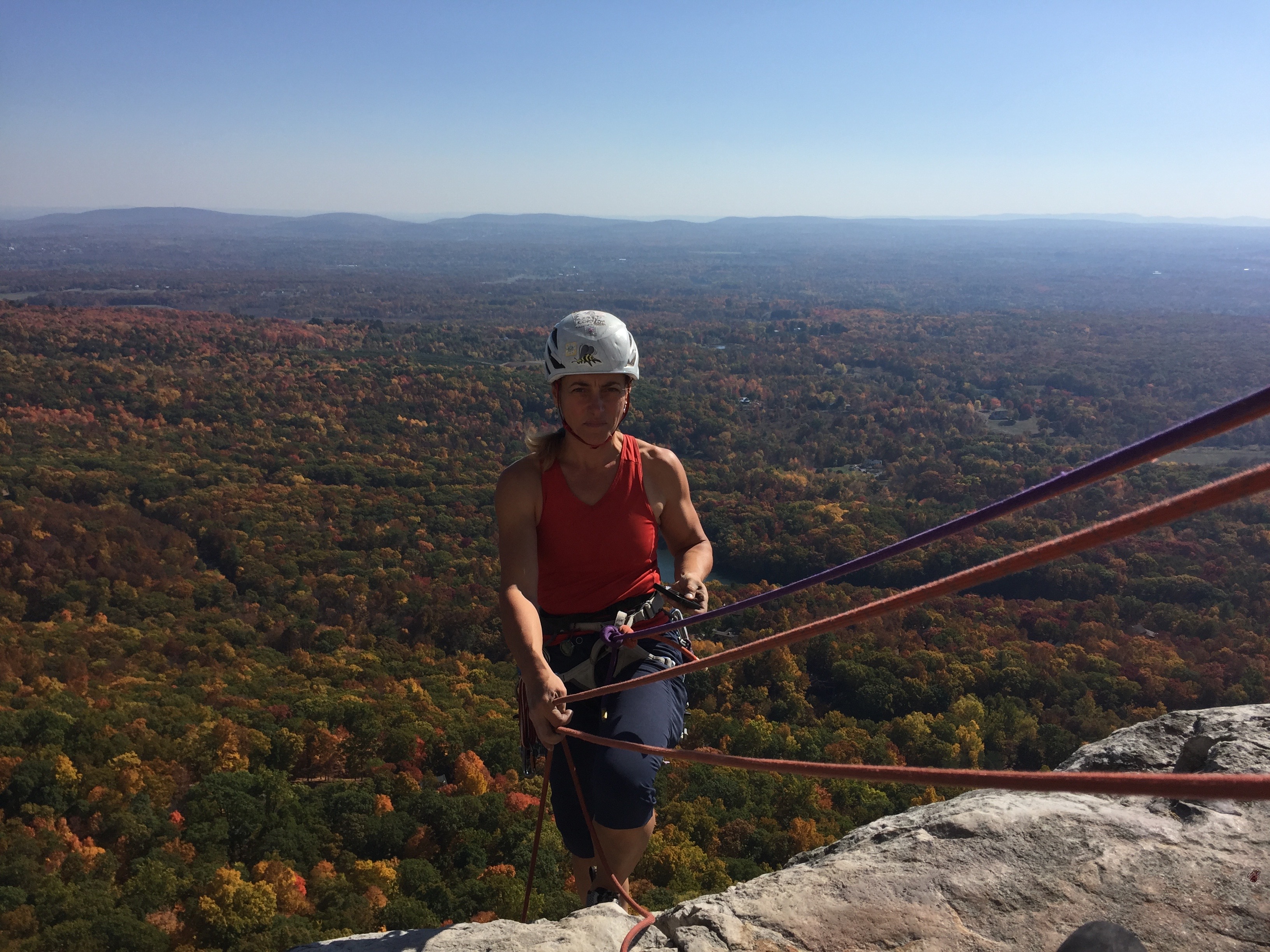Roofs, old-school grades, and steep routes are just a few signature characteristics of climbing in the Gunks. Another staple of climbing in the Gunks is the Eastern Mountain Sports Climbing School, the oldest climbing school in the East, teaching technical climbing since 1968. We spoke to two of the Climbing School’s current guides in the Gunks—Patty Lankhorst and Marcia Stephens—to learn what makes the Gunks so special, get a few tips for climbing at the iconic area, and better understand the challenges and advantages of being a female guide and climber.

Why the Gunks Rock
The closest climbing destination to New York City, the Shawangunks proximity to a major metropolis is just one of many reasons for the area’s popularity. Another reason is the diversity of climbing found at the Gunks, which offers both single-pitch and multi-pitch traditional climbing, top roping, and awesome bouldering (with problems established by climbing luminaries such as John Gill, Lynn Hill, and Russ Clune). While you won’t find any sport climbing in the Gunks, you will find climbing rivaling the steepness of the Northeast’s sport crags along with huge roofs and tremendous exposure.
Patty, an AMGA Rock Instructor and one of the handful of female guides in Northeast with the certification who’s working as a full-time climbing guide, has been living and climbing in the Gunks for over 22 years, helping clients up the area’s classic routes for the last 16. A local fixture, she “knows the cliffs like the back of her hand” and recommends that every climber make at least one trip to this rock climbing mecca.
Marcia does, too. As a longtime climber and guide, one thing Marcia loves about the Gunks is that there’s “something for everyone, from ages 6 to 60+!” Visitors to the area will discover everything from cracks to jugs to routes ranging from 5.0 to 5.14, and slabs to complement the steeps. Some of Patty’s favorite routes at the Gunks are High Exposure (5.6), Cascading Crystal Kaleidoscope (CCK) (5.8), Bonnie’s Roof (5.9), and pretty much everything on the Arrow Wall.
Once you get tired from all the climbing at the Gunks, there’s fantastic rest-day activities such as hiking, biking, trail running, and swimming. And if you’re checking out the Gunks this summer, Marcia recommends ending every climbing session with a dip in the refreshingly cool water at Split Rock—a great way to beat the heat!

Tips for Sending at the Gunks
You might think sending classic routes at the Gunks is a great chance to flex your “tee-shirt muscles,” but Patty and Marcia—who are both petite female climbers—stress that size, strength, and ape index won’t get you through every crux. Instead, they emphasize that no matter your size, footwork, technique, and flexibility are keys to overcoming the area’s most notorious obstacles.
One of Marcia’s favorite techniques is the high step—where climbers use hip flexibility to hike a foot up on a hold. She regularly busts it out for tackling the crux of Gunks classics such as No Picnic (5.5) and Black Fly (5.5), routes she commonly guides.
Patty wholeheartedly agrees with Marcia’s emphasis on footwork. She stresses that “climbing is all about the feet, especially at the Gunks.” If your feet are not positioned correctly, she advises, it puts added weight on your arms and fingers, making the route seem more challenging because your arms get pumped out so quickly. For routes with big roofs—like Shockley’s Ceiling (5.6)—Patty recommends high feet, as “getting those feet up and putting your weight on them as soon as possible keeps you from peeling off.”
While Patty is quick to acknowledge that taller people tend to have an easier time reaching through some cruxy roofs, she also recognizes the advantage that her size provides on more “crunched” up moves and smaller handholds. Because every climber’s body type is different, when guiding she tries to help clients “recognize their strengths and weaknesses and maximize what they do have.”

Protecting Yourself On the Way Up…
Climbing at the Gunks is different, with moves and exposure unlike many crags in the Northeast. For those new to the area, Marcia suggests familiarizing yourself with the routes and approaches, initially choosing climbs with grades below your normal sending level. This is especially important because there’s a long history of sandbagging at the Gunks, resulting in climbs feeling harder here than similarly rated routes elsewhere.
Since many anchors at the Gunks aren’t bolted, Marcia and Patty recommend that visiting leaders carry sufficient gear to protect the pitch and build a gear anchor. For many climbers, especially those unfamiliar with the route they’re climbing, this often means doubling up on critical cams.
The Gunks are also riddled with horizontal cracks and finding the best way to protect them can often befuddle first-time visitors. Tricams work wonders here—so much so that the Pink Tricam, better known as the CAMP 0.5 Tri-Cam Evo, has become synonymous with the area. According to Patty, they’re also the most commonly stuck pieces found on the cliffs, so practice placing, and removing, them before visiting the Gunks. Marcia encourages carrying “Big Blue” (a Black Diamond #3 Cam), citing the cam’s knack for protecting the crux of many Gunks classics. Worried about the weight of the big blue cam on the steep stuff? Check out the ultralight version of the classic cam, the Black Diamond Ultralight Camelot #3.
There’s a lot more to staying safe at the Gunks than just having the right gear. In particular, don’t forget the typical safety checks before you start up a climb. Among the questions Patty recommends asking before leaving the deck are: is the climber’s figure eight tied correctly? and is the belayer’s device threaded properly?
…and on the Way Down
Because many routes at the Gunks are between two and four pitches, spending a day (or more) climbing there means that most climbers will spend a good amount of time transitioning from climbing to rappelling. Before heading down, climbers should double check whether the rappel rope is properly threaded through the rap rings, the rappeller’s device is properly connected to the rap ropes, the rap ropes are properly tied together (if using two ropes), and the rappeller has a “third hand” backup. Patty also reminds us, whether at the Gunks or at our home crag, rappeling with stopper knots tied into the ends of the rope is critical, especially if you are unfamiliar with the rap route.

Go with a Guide
Despite recent efforts by the AMGA and others to promote diversity in the profession (including a new women’s-only Rock Guide Course), guiding remains a male-dominated profession. But whether it’s breaking guiding’s glass ceiling or sending Shockley’s Ceiling, Patty and Marcia are some of EMS’s go-to guides in the Gunks. Both are passionate about showing friends and guests how amazing, beautiful, and adventurous the area is and are excited to share with others what drew them each to the area and has kept them there. Learn more about climbing in the Gunks or tick a few classic routes by visiting the Eastern Mountain Climbing School’s website and booking a day of climbing with Patty or Marcia.
Tim Peck and Doug Martland
Tim and Doug met long ago at the Eastern Mountain Sports in Canton, Massachusetts. Bonding over a love of slick Quincy Quarry granite, White Mountain sufferfests, and scheming up adventures while folding tee-shirts, today Tim and Doug collaborate to write about their favorite outdoor activities and occasionally get nostalgic about tee-shirt tables.
Related Posts
April 12, 2024
Explore Like a Local: The Outdoor Mecca of North Conway, NH
There's a lot to love about this New…
April 3, 2024
5 Things To Do in the Boston Area During Mud Season
Adventure opportunities are abundant…
April 2, 2024
10 Tips for Mountain Biking Etiquette During Mud Season
One rough spring could ruin the…




